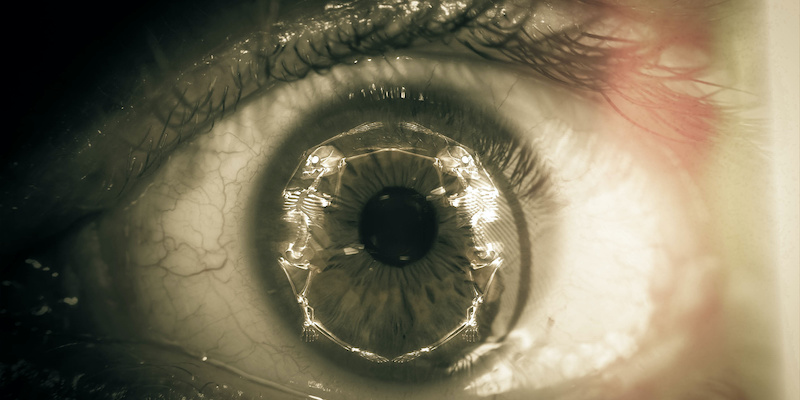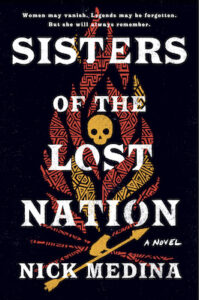What makes a horror story scary? Is it a monster? An act of random violence? The spilling of blood? Or is it what those things symbolize that crawls under our skin to send a chill down our spines?
The monster in Mary Shelley’s Frankenstein (1818) isn’t just a collection of random human parts, it’s a symbol of the arrogance of man, a reflection on the potential consequences of pursuing knowledge and power that mortals might not be equipped to handle.
The titular character in Bram Stoker’s Dracula (1897) doesn’t exist just to make you watch your neck. The Count’s move from Transylvania to England exposes fear of the other, exemplified by a cast of upstanding English characters who combine forces to stop the bloodthirsty Count before he can corrupt their country.
Like kids on Halloween, emboldened by costumes that allow them to become bigger, badder, and bolder than they normally are out on the playground, social issues are often dressed up or disguised within horror literature, sometimes making them hard to spot and easy to miss, but they—like the costumed kids—can be so powerful on the page that their significance becomes impossible to ignore. Dressed up or stripped down, social issues have played a major role in horror literature throughout history. They might take the form of monsters, devils, demons, or even a shark, such as in Peter Benchley’s Jaws (1974), but in the end, they serve a similar purpose: to explore concerns within a current culture, often revealing the creator’s fears or personal pain.
Look, for instance, at novels published in the wake of World War II, when there was an uptick in storylines involving nuclear attacks, apocalyptic wastelands, loneliness, and despair, such as in Wilson Tucker’s The Long Loud Silence (1952), Richard Matheson’s I am Legend (1954), Nevil Shute’s On the Beach (1957), and Walter M. Miller Jr.’s A Canticle for Leibowitz (1960).
After September 11, 2001, and the economic crisis that followed, we saw horror—especially in TV and cinema—turn toward themes of collapse and concerns over government power. Vampires and zombies took centerstage, standing in for ruthless leaders and a forlorn public, stripped of security, shelter, and even identity. Rather than the obligatory happy ending, conclusions became bleaker, less optimistic. Stephen King’s novella The Mist (1980) and Frank Darabont’s 2007 film adaption of it serve as a strong example. In King’s version, the surviving characters are left with hope that they might find a safe haven, whereas in Darabont’s adaption the characters commit suicide seconds before they could have been saved.
In my own novel, Sisters of the Lost Nation (2023), I shine a light on the Missing and Murdered Indigenous Women and Girls (WWIMG) epidemic, in addition to reflecting upon racism, identity, social acceptance, and agism. Anna Horn, the seventeen-year-old main character, is Native and lives on the (fictional) Takoda reservation in Louisiana. Anna is an outcast, a loner, someone her white peers torment because they can’t figure out who or what she is. Having cut her hair short and insistent on wearing her father’s old clothes, Anna isn’t the typical 1990s girl. She loves her tribe’s old stories and worries that their significance will be lost. When her little sister Grace—the antithesis of Anna, obsessed with her appearance and convinced that a cellphone will help her climb the rungs of her high school’s hierarchy—goes missing from the reservation, Anna, influenced by the stories she loves, becomes convinced that Grace has morphed into a terrifying creature that’s haunted her since she was a child. As the haunting gets worse, Anna, with wisdom gained from one of her tribe’s tales, realizes that she doesn’t have to be anything other than herself, and that she’s far more inimitable than her classmates, or even the sheriff in town, who refuses to search for Grace, ever thought.
Simply stated, horror provides a voice for the marginalized, the abused, the lost. And in doing so, it subjects readers to situations and circumstances they might not otherwise experience, let alone consider. Whether it be issues of racism, misogyny, religious oppression, identity, sexual orientation, police brutality, childhood abuse, or any other injustice, as the list can go on and on, addressing social issues within horror literature is an especially effective way of helping outsiders (meaning those who haven’t lived these experiences) feel and understand what it’s like. That’s not to say that we’ll turn a novel’s final page fully sensing someone else’s trauma, but the nature of horror itself, which aims to unsettle, disturb, and alarm, and makes for an ideal vessel in which to nestle and explore these troubling issues.
Furthermore, social issues within horror stories can compel us to change something about ourselves or to work toward making improvements within society. If we’re feeling happy and at peace (blissfully ignorant, perhaps), we might just become too comfortable. Once we’ve been exposed to—and frightened by—the horrors that surround us like motes of dust in the air, so easy to overlook, we’re more likely to react. Humans, naturally, are compelled by feelings. When we’re hungry, we eat. When we’re tired, we sleep. When we’re lonely, we seek companionship. When we sense danger, we seek security, and if that danger impacts someone else more than us, there’s a good chance we’ll end up helping that other person out.
And if that’s not enough of a positive, exploring social issues through horror literature can open our eyes to the blessings in our lives. By gaining an understanding of others’ troubles and challenges, we’re more likely to see that our own aren’t so bad.
Horror, of course, will endure as an outlet for social issues, and readers like me will continue to seek stories that scare us, knowing that those stories might just change us as well.
***


















